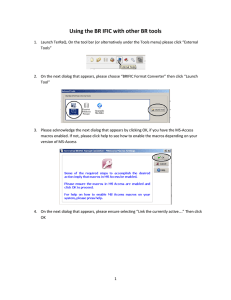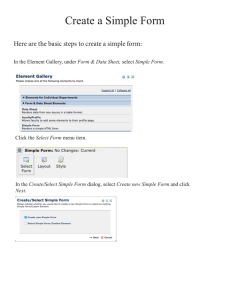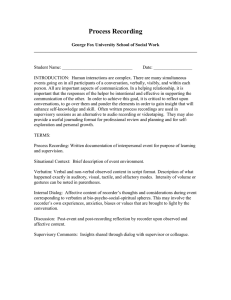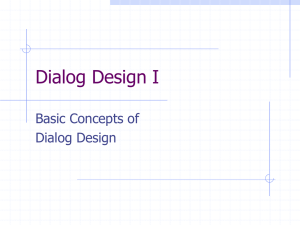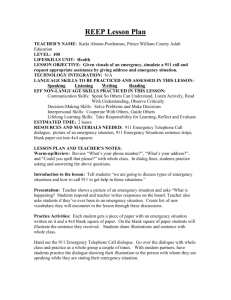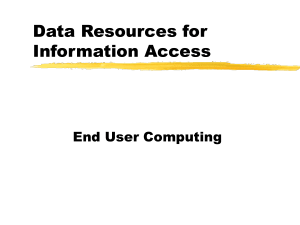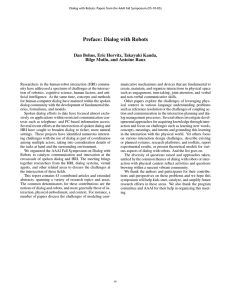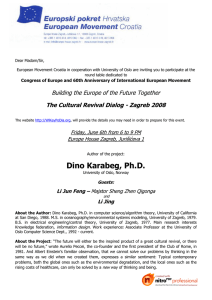GREEN RESPONSE AND GREEN DIALOG -
advertisement
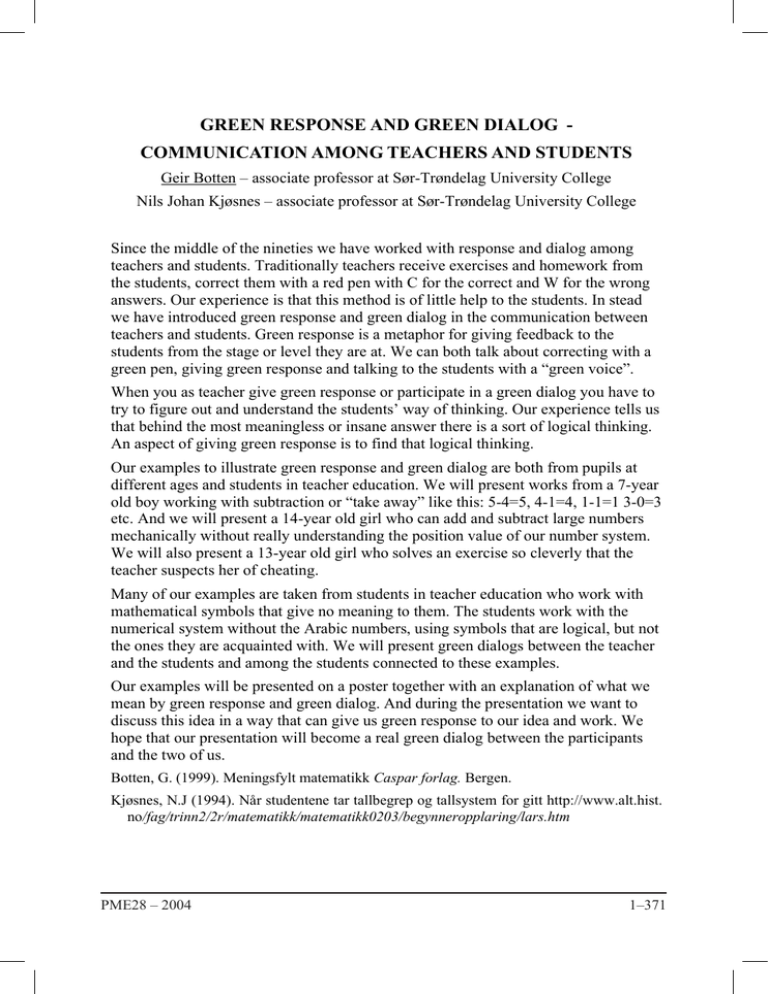
GREEN RESPONSE AND GREEN DIALOG COMMUNICATION AMONG TEACHERS AND STUDENTS Geir Botten – associate professor at Sør-Trøndelag University College Nils Johan Kjøsnes – associate professor at Sør-Trøndelag University College Since the middle of the nineties we have worked with response and dialog among teachers and students. Traditionally teachers receive exercises and homework from the students, correct them with a red pen with C for the correct and W for the wrong answers. Our experience is that this method is of little help to the students. In stead we have introduced green response and green dialog in the communication between teachers and students. Green response is a metaphor for giving feedback to the students from the stage or level they are at. We can both talk about correcting with a green pen, giving green response and talking to the students with a “green voice”. When you as teacher give green response or participate in a green dialog you have to try to figure out and understand the students’ way of thinking. Our experience tells us that behind the most meaningless or insane answer there is a sort of logical thinking. An aspect of giving green response is to find that logical thinking. Our examples to illustrate green response and green dialog are both from pupils at different ages and students in teacher education. We will present works from a 7-year old boy working with subtraction or “take away” like this: 5-4=5, 4-1=4, 1-1=1 3-0=3 etc. And we will present a 14-year old girl who can add and subtract large numbers mechanically without really understanding the position value of our number system. We will also present a 13-year old girl who solves an exercise so cleverly that the teacher suspects her of cheating. Many of our examples are taken from students in teacher education who work with mathematical symbols that give no meaning to them. The students work with the numerical system without the Arabic numbers, using symbols that are logical, but not the ones they are acquainted with. We will present green dialogs between the teacher and the students and among the students connected to these examples. Our examples will be presented on a poster together with an explanation of what we mean by green response and green dialog. And during the presentation we want to discuss this idea in a way that can give us green response to our idea and work. We hope that our presentation will become a real green dialog between the participants and the two of us. Botten, G. (1999). Meningsfylt matematikk Caspar forlag. Bergen. Kjøsnes, N.J (1994). Når studentene tar tallbegrep og tallsystem for gitt http://www.alt.hist. no/fag/trinn2/2r/matematikk/matematikk0203/begynneropplaring/lars.htm PME28 – 2004 1–371



